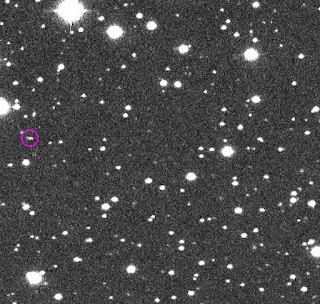Planetary Ring Theory Anomaly
Saturn pleases us when the angle is just right and we can be amazed by its series of rings, but there are other planets that have rings as well. It took powerful telescopes to finally see them. The story goes that smaller bodies get too close to planets and break apart, forming rings.
Way out yonder is a minor planet, a trans-Neptunian object, called Quaoar. That name came from a deity of indigenous people in the area that is now southern California. (I reckon it is preferable to one of his other names, Chinigchinix.) Smaller than Pluto, it has a moon. And a ring system?
 |
| Quaoar, NASA / JHUAPL / SwRI (Usage does not imply endorsement of site contents) |
"This doesn't prove young-earth creation, Cowboy Bob!"
No, it doesn't. But it is an example of how atheists misrepresent creationists. Putting words in our mouths is a way of making straw man arguments, and we don't have to defend things we didn't say. A one-off thing like rings around Quaoar usually doesn't carry much importance. However, there are many anomalies that thwart deep time and cosmic evolution stories (secularists deny evidence and insist Titan is old, for example), and those lend support to biblical creation. You savvy?
Quaoar is a minor planet beyond Neptune that has been known since 2002. Classed as a Trans-Neptunian Object (TNO), it is the seventh largest minor planet (Pluto is #1). Astronomers, using occultation techniques, inferred a dense ring orbiting Quaoar. Problem: it shouldn’t be there.
Satellites around small bodies are not as surprising, but rings? According to theory, rings form when objects move into a radius from a body called the Roche Limit and break up. What has long been accepted is that tidal forces break apart objects within the Roche limit; then, the disrupted debris becomes a ring. Another TNO (Haumea) has a ring, and a space rock around beyond Saturn has one. Those rings fit the Roche theory. Finding a ring outside Quaoar’s Roche limit was not only a surprise, but a threat to long-standing ideas in textbooks. Here’s what news reports say about this:
To see what they say, fly over to "Ring Around the Theory." The first three minutes of the following video are interesting, then some nonsense.